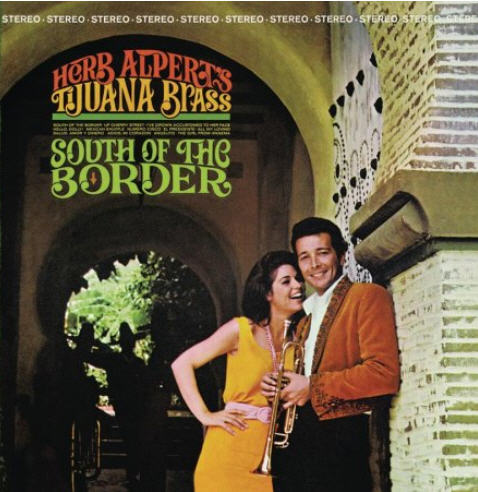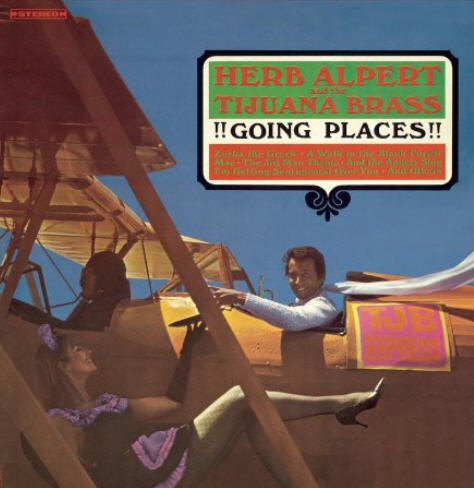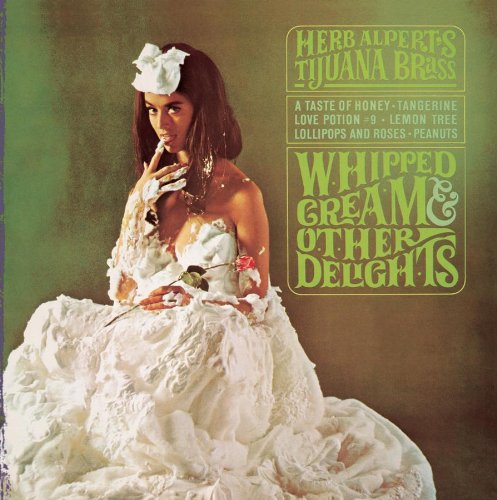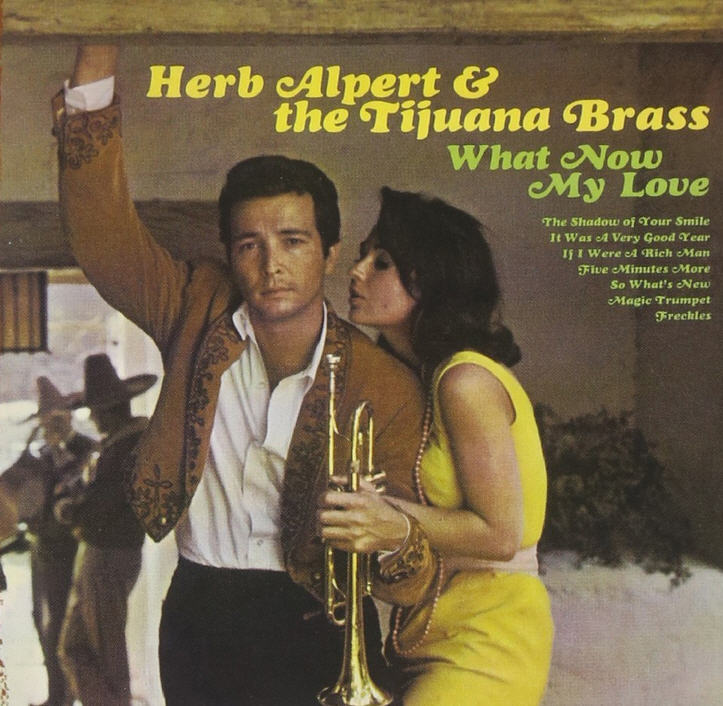
Exposé Online
What's old
Exposé print issues (1993-2011)
- 1 (October 1993)
- 2 (February 1994)
- 3 (May 1994)
- 4 (August 1994)
- 5 (October 1994)
- 6 (March 1995)
- 7 (July 1995)
- 8 (November 1995)
- 9 (March 1996)
- 10 (August 1996)
- 11 (February 1997)
- 12 (May 1997)
- 13 (October 1997)
- 14 (February 1998)
- 15 (July 1998)
- 16 (January 1999)
- 17 (April 1999)
- 18 (November 1999)
- 19 (May 2000)
- 20 (October 2000)
- 21 (March 2001)
- 22 (July 2001)
- 23 (December 2001)
- 24 (April 2002)
- 25 (September 2002)
- 26 (February 2003)
- 27 (August 2003)
- 28 (December 2003)
- 29 (April 2004)
- 30 (September 2004)
- 31 (March 2005)
- 32 (September 2005)
- 33 (May 2006)
- 34 (March 2007)
- 35 (January 2008)
- 36 (October 2008)
- 37 (July 2009)
- 38 (July 2010)
- 39 (Summer 2011)
Reviews
Herb Alpert & The Tijuana Brass — The Lonely Bull
(Shout Factory DK 32771, 1962/2005, CD)
Herb Alpert's Tijuana Brass — South of the Border
(Shout Factory DK 32772, 1964/2005, CD)
Herb Alpert & The Tijuana Brass — !!Going Places!!
(Shout Factory DK 30765, 1964/2005, CD)
Herb Alpert's Tijuana Brass — Whipped Cream and Other Delights
(Shout Factory DK 32868, 1965/2005, CD)
Herb Alpert & The Tijuana Brass — S.R.O.
(Shout Factory DK 30858, 1966/2005, CD)
Herb Alpert & The Tijuana Brass — What Now My Love
(Shout Factory DK 30849, 1966/2005, CD)
by Mac Beaulieu, Published 2006-05-01






“You hear three notes and you know it’s Herb Alpert,” remarked Miles Davis in a 1989 interview. That isn’t at all surprising considering Herb Alpert and the Tijuana Brass’ overwhelming presence in 60s America. It’s easy now to characterize him as a throwaway lounge act whose place was limited to game shows, commercials, and cocktail parties for squares, but this would be off-the-mark revisionism. His music’s easy, polite character attracted older listeners, and his knack for melody, atmosphere, and his movie star good looks attracted younger listeners, for whom Alpert would prove to be an undeniable guilty pleasure. This was a scarcely hidden pleasure however. Despite a fair degree of kitsch and corn, and even though it was popular with our parents, it was still strangely “ok” for younger folks to listen. After much initial taunting and teasing from the kids, my mother got used to requests to hear her TJB tapes on a family trip to California when we ourselves took the South of the Border plunge.
Alpert entered the scene in 1962 after attending a bullfight in Tijuana. So moved was he by the ambience in the ring: the crowds, the brass fanfares, the boda bags, the electricity in the air; he vowed to capture the feeling in music. Adapting an already existing song and adding cheers from a bullfight, the result was “The Lonely Bull,” released on his other new creation, A&M Records. A marvelously evocative song that fulfilled his goal with panache, this hit was soon after expanded into a full album, almost worth the price for the title track alone, yet fully worthy of merit as a package.
After his lackluster performing Volume 2, South of the Border expanded on the successful ingredients of the debut. This featured the most Spanish oriented song list of them all, and also featured the addition of electric bass that would help the band appeal to the younger crowd. Aside from the Mexican song titles and the use of marimbas and guitar strumming, Alpert freely admits there was no real Latin association in his music. Yet it succeeded in summoning the spirit of Tijuana in the same way that Ennio Morricone’s music evoked the spirit of the American West, or 50s exotica spoke of tiki lanterns. The TJB did sound quite Mexican to the uninitiated in the beginning, but their sound would veer slowly away from that overt imagery and become a unique expression of Americana. He was determined to not become a one-trick pony.
No one could have anticipated that the next album, 1965’s Whipped Cream and Other Delights, would be the start of something huge. The album would spend eight weeks at number one and the B-side of the “Whipped Cream” single , “A Taste of Honey,” would prove the catalyst toward worldwide fame, cemented by a rapid fire succession of chart-topping album releases. In addition to songs from his mainstay tunesmith Sol Lake as well as songs from within the band, Alpert’s liberal use of covers came from many places and times, all put through the TJB filter. This was no more evident than on Going Places, another 1965 album, this time visiting Germany and Greece, swing and surf. Before anyone even heard a note there were 1,200,000 orders for it, and by the time it was done, no one would forget it thanks to songs like “Spanish Flea,” “Tijuana Taxi,” and “Zorba the Greek,” his standing ovation producing closer.
The first of two albums from 1966 was What Now My Love. Its title track had already been covered 200 times before Alpert recorded his subtly samba-inflected version, but it worked because he chose his songs carefully and experimented with many ways of expressing their themes with his trumpet. Another secret to the TJB’s success is that the music was never fully rehearsed before recording. This ensured a degree of spontaneity that would inevitably be felt on record. “It Was a Very Good Year” would show a moving, unusually melancholy side of the band, and the album in general is the most measured and sedate of the bunch so far. “More piano bar than Tijuana bullring” as the notes say. Next was S.R.O., with its well justified use of the acronym “standing room only.” TJB concerts would see one of the most bizarre combinations of cross-generational attendees of the day, and they would be the first band to travel with their own extensive sound system. He was playing to sell-out crowds in 49 states as well as in London, Paris, Frankfurt, and the Plaza de Toros, where he experienced a bullfight one fateful day in 1962. The stats at this point tell a remarkable tale: this fourth largest selling artist of the decade had five albums on the Billboard pop chart during the same week in 1966, four of those in the Top Ten, outselling The Beatles that year by two to one. At the time when Lennon was famously quoted lamenting that The Beatles were more popular than Jesus, Herb Alpert was arguably more popular than The Beatles!
S.R.O. would see a return to a jauntier collection of songs, yet it somehow maintains the restrained feel of its predecessor. The fateful bullfight notwithstanding, his greatest influence and favorite music has been jazz, and S.R.O. would be his most jazz-influenced outing yet, though we’re talking subtle influence rather than blatant expression. With an arrangement entirely in his head and some time to find the “right setting,” the band recorded Nat Adderly’s “The Work Song” in 20 minutes, a song that would “get me going in a different direction.” Also featured is the borrowing of fellow studio mate Phil Spector’s wall of sound for the track “Flamingo.” With no standout hit to speak of, S.R.O. would peak at a relatively meager number 2.
Of course, no discussion of Herb Alpert should seriously suggest that the TJB was nearly as great or influential as the Fab Four. Perhaps it’s telling that one song that would stiffen the band terribly would be a cover of The Beatles’ “All My Loving.” But the ability to use The Beatles as a yardstick at all is illustrative of Alpert’s success and of the indelible stamp he left for the day.
Filed under: Reissues, Issue 33, 2005 releases, 1962 recordings, 1964 recordings, 1965 recordings, 1966 recordings
Related artist(s): Herb Alpert & The Tijuana Brass
What's new
These are the most recent changes made to artists, releases, and articles.
- Review: Zabrahana - Whales Dream in Purple
Published 2026-01-02 - Review: McLuhan - Anomaly
Published 2026-01-01 - Review: Ektör - Ektöristan
Published 2025-12-31 - Release: Chatte Royal - Mick Torres Plays Too F***ing Loud
Updated 2025-12-30 15:33:15 - Artist: Chatte Royal
Updated 2025-12-30 15:32:15 - Release: Olly Chalk - In Those Remote Stars
Updated 2025-12-30 14:01:10 - Artist: Olly Chalk
Updated 2025-12-30 13:59:56 - Review: Pietro Zollo - The Future Is Now
Published 2025-12-30 - Release: Dhope - Musical Exhibitions
Updated 2025-12-29 23:00:53 - Release: Tin Pan Alley - Tin Pan Alley
Updated 2025-12-29 22:51:10 - Release: Jeff Pearce - Infinite Ambient: Winter Landscapes
Updated 2025-12-29 22:33:12 - Release: Trio of Bloom - Trio of Bloom
Updated 2025-12-29 17:19:40 - Artist: Trio of Bloom
Updated 2025-12-29 17:16:50 - Artist: Craig Taborn
Updated 2025-12-29 17:02:15 - Release: Family - Old Songs, New Songs
Updated 2025-12-29 00:03:41 - Review: The Kirkbys - It's a Crime: The Complete Recordings
Published 2025-12-29 - Release: Various Artists - Psychedelic Underground 20
Updated 2025-12-28 23:33:26 - Artist: Dhope
Updated 2025-12-28 23:27:49 - Artist: Tin Pan Alley
Updated 2025-12-28 23:21:39 - Release: Various Artists - Psychedelic Underground 19
Updated 2025-12-28 23:04:15
